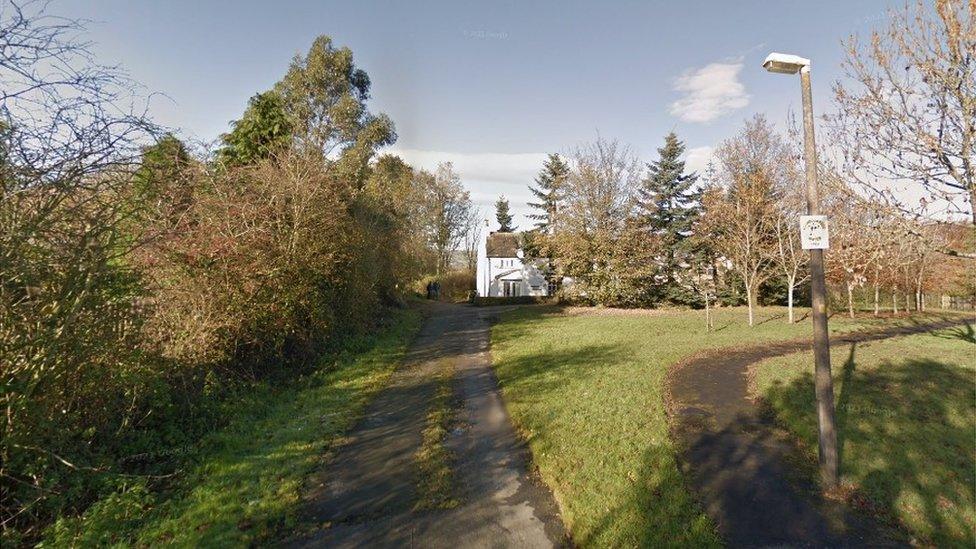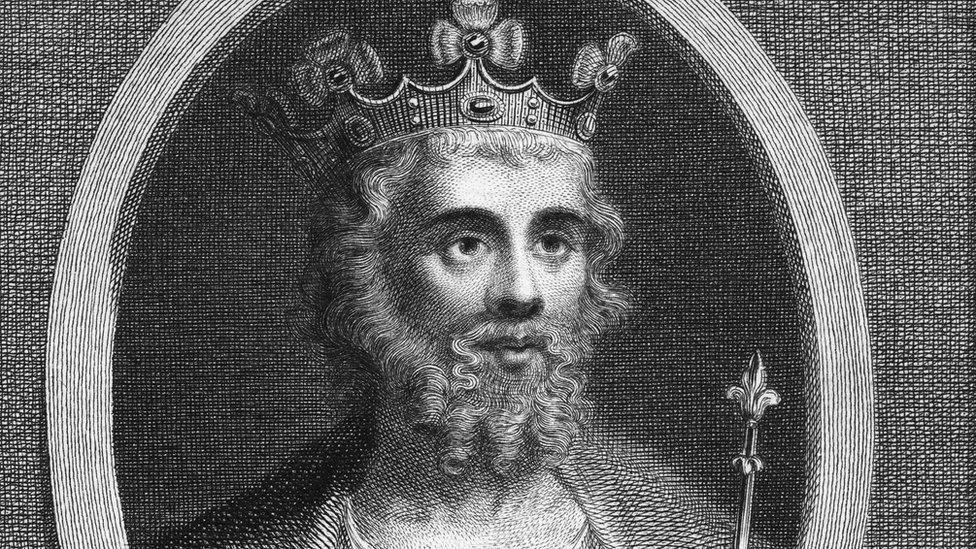Site near Ightenhill manor house may be lost village, historian says
- Published

Mr Frost said the site of the manor house had been known for years, but had "become much more interesting"
Evidence for a "lost village" which was visited by King Edward II has been found near the site of a medieval manor house, a historian has said.
A study using laser imaging technology discovered indications of a settlement near the 12th Century manor house at Ightenhill in Burnley.
Research indicates it had a chaplain, ironworks and brewery and may have been home to dozens of people.
Roger Frost said the site could change the medieval history of the area.
It had always been thought a medieval village on the banks of the River Brun eventually grew into the market town of Burnley, which swallowed up the surrounding estates and hamlets.
However, the new study suggests Ightenhill may have been as big and important as its neighbour.
Mr Frost has been working with archaeologist Dr David Taylor using the light detection and ranging (lidar) technology at the site off Helvellyn Drive, the Local Democracy Reporting Service said.

The site at Ightenhill was important enough to have been visited by King Edward II
Their research indicates Ightenhill also had a horse breeding stud farm with about 200 horses, a brewery and many more buildings than previously thought, housing dozens of people.
The manor was important enough to be visited by King Edward II in 1322 after his victory in the Battle of Boroughbridge.
Dr Taylor and Mr Frost hope to mount a full-scale dig, with the help of the University of Central Lancashire, to find out exactly how big the settlement was and how crucial it was to the growth of Burnley.
Mr Frost said the site of the manor house had been known for many years, but had now "become much more interesting" as Ightenhill was "likely to have been a medieval village, a lost village site".
"The occupations mentioned at, or near the manor house, added up to quite a number and this has been confirmed by the discovery of a number of houses at or very close to the site," he said.
"It is difficult to be precise about numbers living there, but there may have been as many as 30 or 40 families, which would give a population of about 150 to 180 people."
He said its discovery was "so important that it probably will change the medieval history of the Burnley area", adding: "We are very excited about it."

Why not follow BBC North West on Facebook, external, Twitter, external and Instagram, external? You can also send story ideas to northwest.newsonline@bbc.co.uk